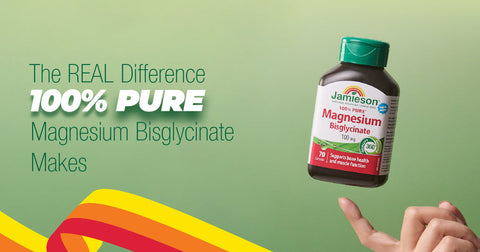We all know someone who insists, “I don’t need a vitamin D supplement—I get mine straight from the sun!” It’s a tempting idea. After all, the sun is free, it feels great, and it’s literally shining down on us… sometimes. Before you grab your sunglasses and head out to soak up some rays, it’s important to bust a common myth: sunlight alone isn’t enough to meet your vitamin D needs. And while you’re chasing those rays, remember — too much sun exposure can actually damage your skin, leading to long-term harmful effects.
What’s the Big Deal About Vitamin D?
Vitamin D is a fat-soluble vitamin that your body can’t live without. Most notably, it helps absorb calcium and phosphorus to keep your bones strong. It’s also critical for a healthy immune system and studies have even shown how it can help with regulate/support skin health.
But getting enough vitamin D? Not always so simple. There are only two major ways to get it: through diet or by producing it in your skin when exposed to UVB rays from the sun.
Diet Dilemma: It’s Not in Everything
Let’s start with diet. The list of foods that naturally contain vitamin D is surprisingly short. We’re talking:
· Fatty fish like salmon, mackerel, and sardines
· Egg yolks
· Mushrooms (especially UV-exposed ones)
Unless you’re eating these regularly—and in decent amounts—it’s tough to hit your daily target. And don’t get too excited about milk and orange juice; while they can be fortified with vitamin D, they aren’t natural sources.
So that leaves us with the sun… right?
Sunlight: Your Skin’s Vitamin D Factory… Sometimes
Here’s how it works: when UVB rays from sunlight hit your skin, they kickstart a chemical reaction that produces vitamin D. It’s biology magic! But unfortunately, there are several major roadblocks that can shut down this process faster than a surprise snowstorm.
1. Latitude & Season: Sorry, Canada
If you live in Canada (or any country above 37° latitude), the sun just doesn’t cut it for part of the year. In winter, the angle of the sun is too low, meaning fewer UVB rays reach the earth’s surface. From roughly October to March, Canadians can stand outside at high noon all they want and still produce virtually zero vitamin D. Yes, even if it’s sunny.
2. Time of Day
UVB rays are strongest between 10 a.m. and 2 p.m.—a time when many people are indoors at school or work. Early morning or late afternoon sun? Not helpful for vitamin D production.
3. Clouds, Smog & Sunscreen
Even on sunny days, things like cloud cover, pollution, and sunscreen can block UVB rays. And while sunscreen is essential for protecting against sunburn and skin cancer, it also limits your skin’s ability to make vitamin D.
Studies have shown that proper, consistent sunscreen use significantly reduces vitamin D synthesis. But don’t ditch the SPF—skin cancer is the most common cancer in Canada, and unprotected sun exposure is the leading cause. Prevention matters.
4. Clothing Coverage
Think about how much of your body is actually exposed when you’re outside in Canada. In the winter? Not much. And even in summer, if you’re wearing long sleeves or a hat (great ways to protect your skin from sunburns and skin damage), you’re reducing your sun exposure. More coverage = less vitamin D production.
Skin Tone Matters, Too
Here’s something most people don’t know; melanin, the pigment that gives skin its color, also acts like a natural sunscreen. This means that people with darker skin tones are better protected from UV rays—but they also need more sun exposure to make the same amount of vitamin D as someone with lighter skin.
As a result, vitamin D deficiency is more common among racialized individuals, particularly in northern climates like Canada.
As we get older, our bodies become less efficient at producing vitamin D from sunlight. A 70-year-old person makes about 25% of the vitamin D that a 20-year-old would from the same amount of sun exposure. So, the older you get, the harder it is to rely on the sun alone.
The Safe, Smart Solution: Jamieson Vitamin D
So, what’s a health-conscious Canadian to do?
Enter Jamieson’s Vitamin D in multiple formats to available to give your body the vitamin D it needs, without needing to rely on unpredictable weather, risky sun exposure, or a diet of fish and mushrooms.
It’s an easy, effective, and safe way to maintain strong bones, support your immune system, and help maintain adequate vitamin D levels when dietary intake or sun exposure is insufficient vitamin D deficiency—all while keeping your skin protected.
Bottom Line
While it’s tempting to believe that summer sunshine has your vitamin D needs covered, the reality—especially in Canada—is that sunlight just isn’t reliable enough year-round. Between winter sun angles, sunscreen, skin tone, aging, and daily life, most people aren’t getting what they need from the sun alone.
So wear your SPF, enjoy the sunshine safely, and let Jamieson’s Vitamin D be your daily sunshine in a bottle.
References:
1.Janz, T. & Pearson, C. Vitamin D blood levels of Canadians. Statistics Canada Catalogue no. 82624-x. Accessed Oct 10, 2019 at: https://www.statcan.gc.ca/pub/82-624-x/2013001/article/11727-eng.htm
2. Bens G. (2014). Sunscreens. Adv Exp Med Biol. 810:429-63.
3. Vitamin D Deficiency: Symptoms & Treatment. Cleveland Clinic. (n.d.). https://my.clevelandclinic.org/health/articles/15050-vitamin-d--vitamin-d-deficiency.
4. Vitamin D. Office of Dietary Supplement. National institutes of Health. Accessed online June 10th, 2021. https://ods.od.nih.gov/factsheets/VitaminD-Consumer/
5. Linus Pauling Institute Micronutrient Information Centre. Vitamin D. Accessed June 10th, 2021 at: https://lpi.oregonstate.edu/mic/vitamins/vitamin-D
6. Mushrooms Canada. Commercialization of Vitamin D Enhanced Mushrooms by UV Light Treatment. Accessed June 10th, 2021 at: https://www.mushrooms.ca/wp-content/uploads/2016/01/Commercialization-of-Vitamin-D-Enhanced-Mushrooms.pdf
7. Sunscreen. The Skin Cancer Foundation. (2021, May 28). https://www.skincancer.org/skin-cancer-prevention/sun-protection/sunscreen/.
8. ComPARe study on preventable cancers in Canada. ComPARe. (2020, December 23). https://prevent.cancer.ca/.
9. Webb, A., Kazantzidis, A., Kift, R., Farrar, M., Wilkinson, J., & Rhodes, L. (2018). Colour Counts: Sunlight and Skin Type as Drivers of Vitamin D Deficiency at UK Latitudes. Nutrients, 10(4), 457. https://doi.org/10.3390/nu10040457
10. African-Americans At Greatest Risk of Vitamin D Deficiency - Cooper Institute. The Cooper Institute. (n.d.). https://www.cooperinstitute.org/2019/09/24/african-americans-at-greatest-risk-of-vitamin-d-deficiency.





